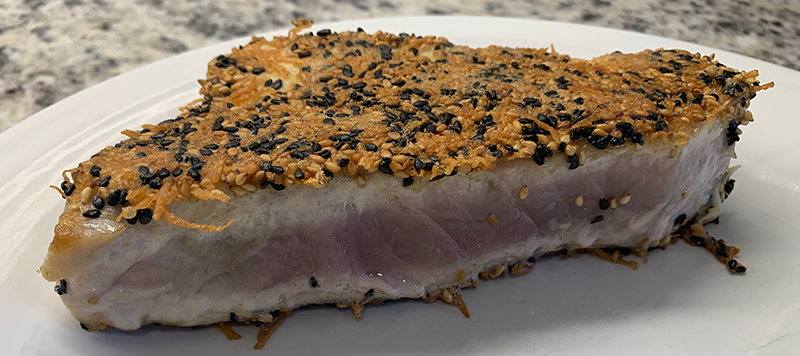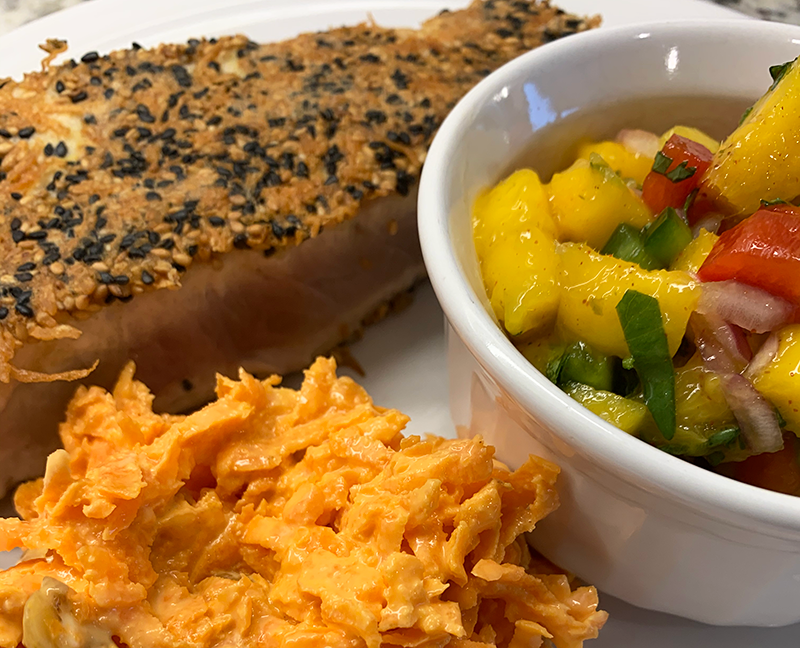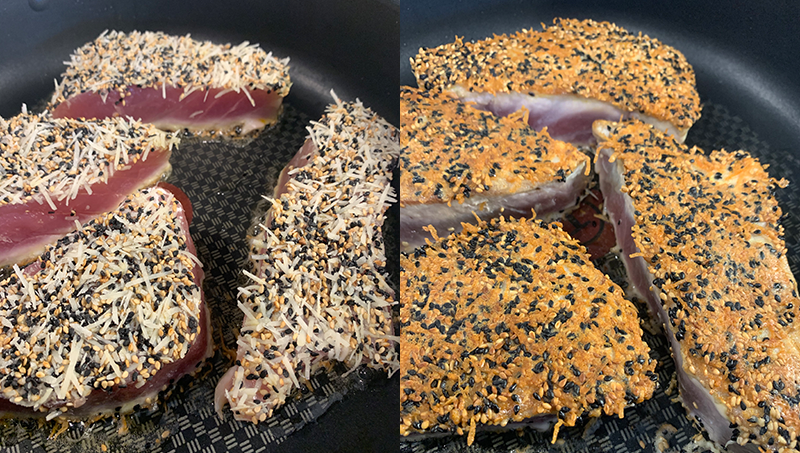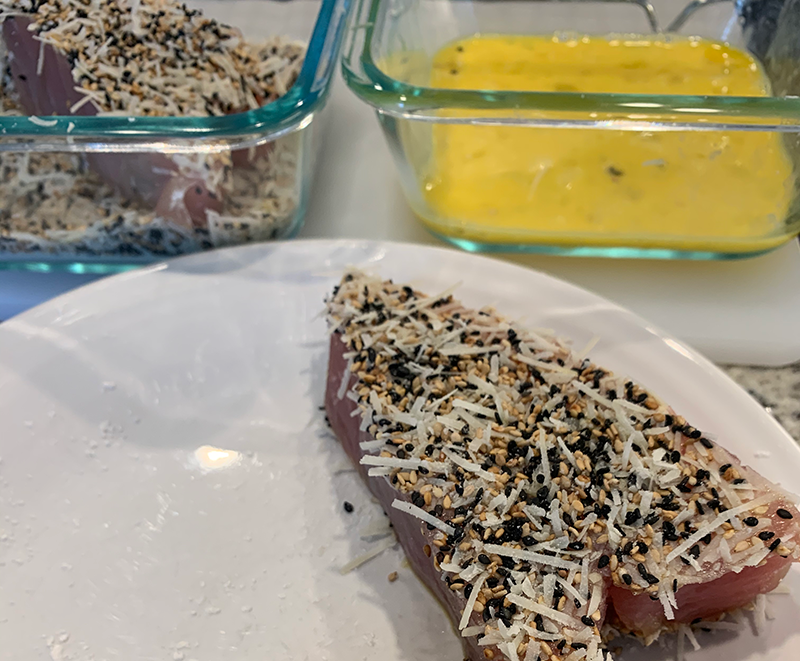

Today’s recipe is another one of those recipes that’s so ridiculously simple it really doesn’t even need a formal recipe, though there are few things worth noting as you pull together these Sesame and Parmesan Crusted Tuna Steaks.
We first stumbled across this recipe in one of our favorite cookbooks of all time, a collection of restaurant recipes collected from eateries around Santa Fe and Northern New Mexico; the cookbook is long out of print, probably considered to be too simple even back in the day for repeat printings. The cookbook was a thick paperback, simply printed without any pictures, but probably the most used cookbook in our kitchen among a bookcase full of them…
Back in the day, looking for a tasty alternative to grilling tuna steaks over live fire (always good but you have to be very careful not to overcook), my wife found this recipe and we adopted it as one of our favorites after the first run.
There are several tricks that make the entire process much easier; one of which is pulling the tuna from the fridge at least 30 minutes before cooking, patting it dry, and then placing on a rack on the counter to let the surfaces dry even further. Any persistent moisture on the surface of the tuna will weaken the bond of the parmesan-sesame seed crust we’re after.

As you’re getting ready, grate approximately 3/4 cup of good block parmesan cheese (use the smaller holes) and mix with at least half of cup of sesame seeds (we like to use both dark and light sesame seeds for interest); spread the cheese/sesame seed mixture out on a plate. Common sense applies here; cooking only a couple of tuna steaks? Then grate less cheese and use less sesame seed. Cooking four or more tuna steaks? Then you’ll need more cheese and sesame seeds…
When you’re ready to go, heat a skillet over medium-high heat for several minutes, then add a tbsp (+/- more or less pending how many pieces you’re cooking) of avocado, olive, or coconut oil.
Now for a pro-tip from our friend Chef Libby in Austin; one of the tricks professional chefs use to ensure that coatings stick very well to proteins is to dry the proteins carefully, then lightly flour the protein’s surface before using a light egg wash to adhere the final coating.

So we’ll dip each tuna steak into flour (on the largest opposing sides of the steaks), dusting off any excess; you make the call on which flour you’d prefer. Now dip each coated steak surface into an egg wash, then immediately into the parmesan-sesame seed mixture to form the coating.
Reduce the stove temperature to medium, and cook the coated tuna steaks to the desired degree; be very attentive and do NOT overcook your tuna.
We like to serve these hot with a spicy salsa or sauce – the images today include the Mango Salsa Number 1 that I shared last week.
Enjoy.



